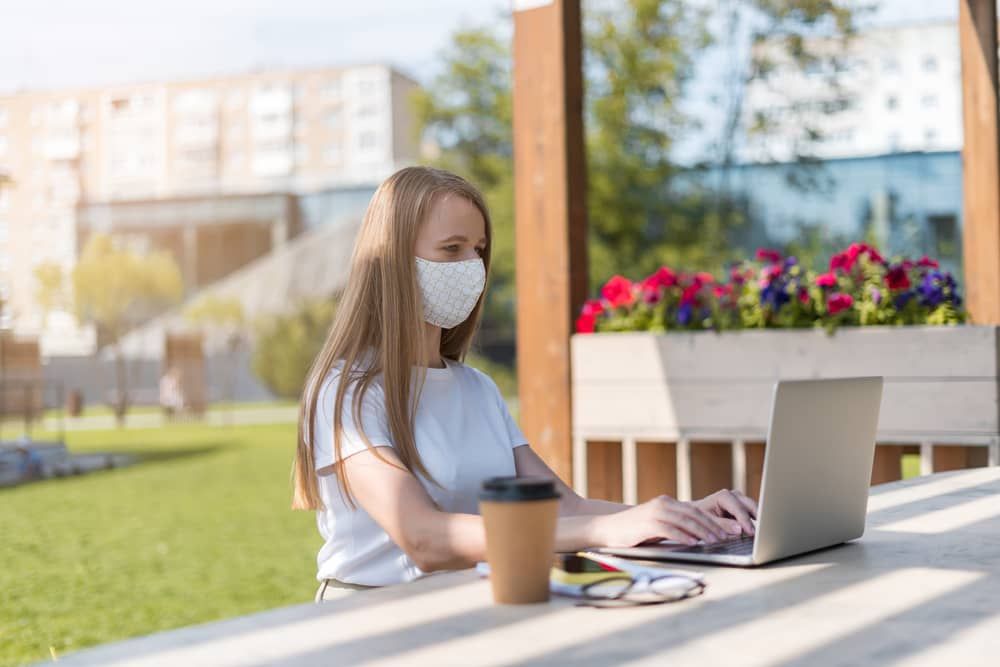4 Ways To Improve WiFi in Large Venues
Despite recent advances in wireless technology, many large venues continue to suffer from sub-par WiFi performance. To bring your event space up to...
2 min read
Tony Ridzyowski : Feb 23, 2021 5:07:29 PM

Without access to strong WiFi at home, many students are turning to outdoor spaces to stay connected and complete their remote education.
When schools switched to remote learning in response to the COVID-19 pandemic, technology — in particular, high-speed internet access — became essential for academic success. Unfortunately, the assumption that all students have access to reliable WiFi simply doesn’t hold true in modern America.
A study from Common Sense Media and the Boston Consulting Group published in June 2020 found that 15 to 16 million K-12 public school students live in homes without an adequate internet connection or have devices that aren’t equipped for distance learning. Those numbers are even higher when you consider internet access among students attending universities.
The result is that students are having to make do with whatever internet they can find in order to complete their schoolwork. These challenges were highlighted recently when a picture went viral of two young students sitting in the parking lot of a Taco Bell, using the restaurant’s free WiFi to complete their remote assignments. While those students have since received a free wireless access point for their home, millions of others continue to struggle.
Fortunately, there is an opportunity for schools, universities, and local governments to change that by making reliable WiFi more accessible to those who need it.
Schools, libraries, and city governments have taken steps to increase outdoor WiFi connectivity and help students complete remote learning without violating social distancing protocols. As a result, attending class in the parking lot has become a way of life for many students whose schools or universities offer free high-speed WiFi access there. While this is far from an ideal solution, it is a major improvement for students who would not otherwise be able to complete their assignments. Some schools, like Indiana University and Miami University, have even made these connected outdoor areas available to members of the public.
Another innovation when it comes to increasing connectivity in outdoor spaces has been the use of school buses as WiFi hotspots. These buses, which usually provide internet access for students on their daily commutes, are now serving a new purpose. Districts across the country have started re-purposing their WiFi-equipped buses to create community WiFi hotspots for students and their families.
City governments have also been working on expanding public WiFi to outdoor spaces around community centers and libraries that previously served as reliable resources for strong internet connections. Replacing these indoor spaces with outdoor connectivity in parks and more can help students of all ages keep up with their remote learning.
When it comes to implementing WiFi connectivity in outdoor spaces, there is no better choice than WiFi 6. Not only does it offer much higher speeds than WiFi 5 — 9.6 Gbps, compared to 3.5 Gbps — WiFi 6 is specifically built for the Internet of Things (IoT). That means it can support more devices and navigate high traffic more effectively than its predecessors. This translates into more uninterrupted internet access for users as well as order-of-magnitude improvements in performance, efficiency, and security.
Organizations looking to keep outdoor spaces connected need a solution that will allow as many members of the public to utilize the connection as possible. They also need to make sure the solution is implemented effectively to ensure they’re getting the most out of their investment.
That’s where Turn-key Technologies, Inc. (TTI) comes in. Our experts have years of experience not only in designing and implementing powerful networks in general, but specifically in connecting outdoor spaces. At Cedar Crest College in Pennsylvania, for example, TTI helped implement a secure outdoor wireless network covering the campus quad in advance of the college’s MayFair Festival.
From conducting an initial site survey, to designing a virtual map of ideal wireless access point placements, to fortifying network security and eliminating dead zones, TTI’s experts can help you increase outdoor internet connectivity to support distance learning on your budget. Contact us today to learn more about how WiFi 6 can help keep outdoor spaces connected for remote learning.

Despite recent advances in wireless technology, many large venues continue to suffer from sub-par WiFi performance. To bring your event space up to...

A growing number of cities are incorporating wireless connectivity into their plans for a “smart” future, but this doesn’t mean that companies are...

These five trends will redefine campus networking in 2019. A university campus is one of the most interesting environments in which to watch new...